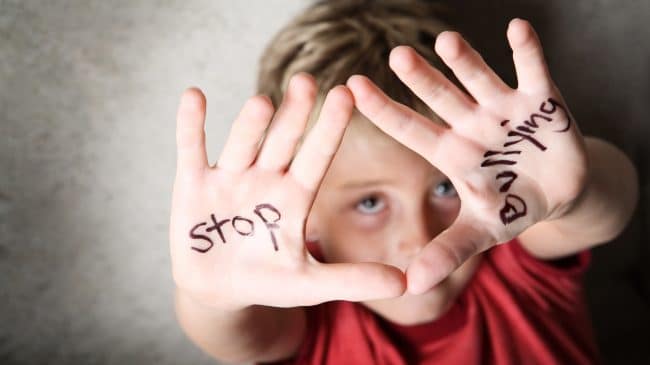School Sector and Climate: An Analysis of K–12 Safety Policies and School Climates in Indiana
Corey A. DeAngelis, Martin F. Lueken
https://doi.org/10.1111/ssqu.12737
https://onlinelibrary.wiley.com/doi/full/10.1111/ssqu.12737
Objective
We evaluate differences in school-safety-related practices and problems between school sectors (private, public charter, and traditional public) in Indiana in 2018.
Methods
Using survey data collected from 618 school leaders in the state, we empirically examine the relationship between school sector and the reported presence of school-safety-related practices and problems occurring at school. Subgroup analyses based on voucher program participation status, school level, and location are also performed.
Results
After controlling for factors such as school type, enrollment, number of students eligible for the federal free and reduced-price lunch, the number of minority students and teachers, and urbanicity, we find evidence to suggest that private and charter schools tend to report fewer discipline problems while employing fewer disciplinary practices than traditional public schools.
Conclusion
Our descriptive results suggest that school sector may play a role in producing positive school environments. Further research is needed to better understand short- and long-run consequences of school safety problems and how school safety and school sector might affect students’ academic and life trajectories.
Excerpt
From bullying to sexual assault to acts of deadly violence, recent events suggest that some schools may be struggling to keep children safe (Jetelina et al., 2019). For example, Musu et al. (2019) found that about 20 percent of students between the ages of 12 and 18 reported being bullied at school during the 2017 school year. In fact, the recently created Federal Commission on School Safety traveled across the United States this year to gain feedback from the public on how to make schools safer. Many people called for heightened security measures, such as arming teachers, mandating clear backpacks, and stationing more officers in public schools. Some schools have responded by increasing police officers, security guards, and other visible security measures, but there is little evidence to support the effectiveness and use of these expensive measures (Cuellar, 2018; Mowen and Freng, 2019). Moreover, this type of environment may not improve the mental health of children within schools. Indeed, some critics argue that a restrictive setting could do more harm than good by stressing students out (Warnick and Kapa, 2019). In addition, having more armed adults on‐site may not reduce the likelihood that students engage in activities such as bullying or fighting (James and McCallion, 2013).1
As the debate continues over what kind of safety practices should be implemented and at what cost, we turn our attention to the question of whether certain schooling types are safer or more secure than other types. Private schools could improve school safety and culture through competitive pressures (Chubb and Moe, 1988, 1990; Friedman, 1955, 1997). Private schools must charge tuition because their costs are not fully covered by taxpayers, whereas district schools receive revenue from local, state, and federal taxes. Furthermore, private schools lose all of their public funding when students leave, whereas district schools keep most federal revenue and usually all revenue generated locally. Per pupil funding also tends to rise when traditional public schools lose students because less than 100 percent of funding is linked to changes in enrollment (Roza and Edmonds, 2014). Research from Georgetown University’s Edunomics Lab shows that only about 40 percent of state and local education funding is disbursed on the basis of students in Indianapolis, Indiana.2 This arrangement suggests that private schools face strong financial incentives to provide students with safe environments.
Families care about their children’s safety and would not voluntarily send their children to schools they perceive as unsafe (Bedrick and Burke, 2018; Catt and Rhinesmith, 2017; Holmes Erickson, 2017). The current public model, however, is based on residential assignment and means that district schools are not free. Consequently, families wanting to access schools in another district must be able to afford a residence in that district. This system of residential assignment can make it quite difficult for some families to get their children out of traditional public schools that parents may perceive as unsafe (Friedman, 1955). This may be especially true for low‐income families in urban areas—whose children typically have the least safe schooling environments—because choosing another traditional public school usually requires changing residences, whereas private schools do not have residential requirements (Friedman, 1997).
As parents value safety, unsafe private schools might face stronger incentives to improve their safety levels if they do not want to shut down in the long run. There may be other reasons for a choice advantage with respect to safety. For example, choice critics argue that school choice policies allow private schools and public charter schools to engage in “cream skimming” (e.g., Altonji, Huang, and Taber, 2010). Thus, private and charter schools may be safer because they benefit from selection effects.
As private and charter schools usually face less government regulation than district schools, private and charter school leaders have more freedom to control the discipline policies at their institutions (Shakeel and DeAngelis, 2017). The freedom to control discipline policies might lead to fewer disciplinary infractions, a safer environment, and better school culture.
Selection on unobservables is an important issue for the school safety literature, and its direction can go both ways. On the one hand, selection issues may help explain some observed advantages (e.g., Davies and Aurini, 2011; Haynes, Phillips, and Goldring, 2010; Jones et al., 2009). Parents with higher education and income levels may be more likely to be active choosers and enroll their children in private schools or public charter schools than traditional public schools, and children from families with more resources may be less likely to have behavioral problems than children from low‐income environments. Alternatively, private schools and public charter schools may focus their mission on serving disadvantaged students or families, and this may motivate kids who might have discipline problems to be placed into these environments by their parents for religious structure, to access smaller settings, or simply for a change. Buckley and Schneider (2005) found no significant difference between the types of students in public charter schools and district schools in Washington, DC, in terms of educability, attitude, parental involvement, and peer group quality. The literature on the question of selection into voucher programs is mixed, with some studies finding evidence of positive selection (e.g., Chakrabarti, 2013), some studies finding mixed results (e.g., Campbell, West, and Peterson, 2005; Paul, Legan, and Metcalf, 2007), and other studies finding evidence of negative selection (e.g., Anderson and Wolf, 2017; Figlio, Hart, and Metzger, 2010).
In theory, it is also possible that additional freedom in setting discipline policies could lead to less safety—especially if school leaders do not have much experience making these types of decisions. Furthermore, traditional public schools might demonstrate safety advantages since they generally receive more financial resources per pupil than charter schools and private schools (e.g., Shakeel, Anderson, and Wolf, 2017; Wolf et al., 2017).
We collected data from 618 Indiana school leaders from three different school sectors to empirically examine the relationship between schooling sector (private, public charter, and traditional public) and the presence of school‐safety‐related practices (such as metal detectors, random dog sniffs, and clear backpacks) and problems occurring at school (such as fighting, bullying, and racial tensions). After controlling for factors such as school type, student enrollment, the number of students eligible for the national free and reduced‐price lunch (FRL) program, the number of minority students and teachers, and urbanicity, we find evidence to suggest that private and charter schools experience fewer disciplinary problems while employing fewer school safety practices.
The full paper is available online here.

